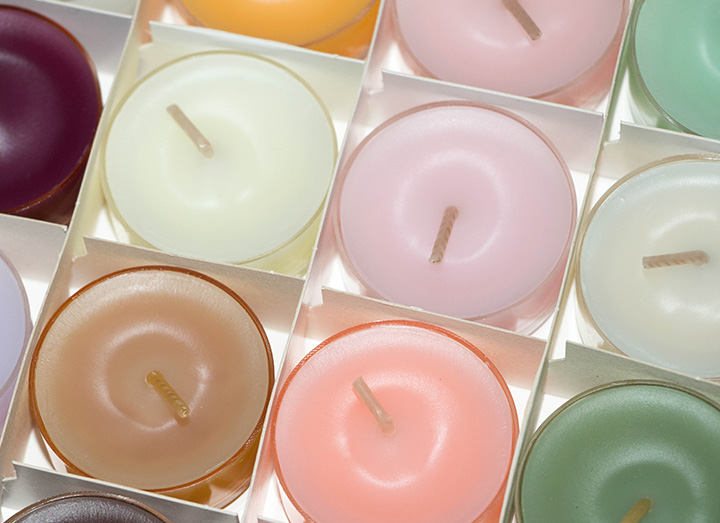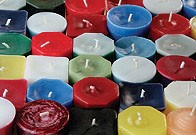How to Set Candle Prices

 ted or operate the business, without a doubt, one of the most important keys to the success of your business is what price you sell your candles for. Many would think this should be an easy formula, but with many factors to consider it is actually a very difficult process and every company/individual will arrive at there selling price for different reasons. The purpose of this article is to help identify the general price range and which markets to consider. No doubt, there are always exceptions and unique circumstances that will have an impact on these guidelines. With the current economic situation, your pricing strategy will be more important than ever.The first question that needs to be answered is:
ted or operate the business, without a doubt, one of the most important keys to the success of your business is what price you sell your candles for. Many would think this should be an easy formula, but with many factors to consider it is actually a very difficult process and every company/individual will arrive at there selling price for different reasons. The purpose of this article is to help identify the general price range and which markets to consider. No doubt, there are always exceptions and unique circumstances that will have an impact on these guidelines. With the current economic situation, your pricing strategy will be more important than ever.The first question that needs to be answered is:
How will you be selling your product?
- Retail store
- Craftshows
- Consignment store
- Wholesale
- Other
Each of these distribution channels dictates a generally accepted margin level.

A general guide to follow is:
The closer you are to selling the consumer, the higher the margin you should attempt to achieve.
There are several reasons this logic prevails. (1) You are taking most of the supply chain cost out of the equation, which allows you to make that money. (2) You will have to handle more single transactions, which drives up your cost and time involved. Instead of selling 25, 50 or 100 candles at a time and sending 1 Invoice, you may have to handle each of the transactions individually.
In most instances, in order to make it work, you need a minimum of a 40 percent margin with a maximum, depending on competition, up to possibly 60 percent.
Again, this is ideal but subject to many other factors. One that comes to mind is if you use candles to get people to your store or booth, and they purchase candle holders or accessories, maybe that percentage can be smaller.
The next selling venue to consider would be wholesale. In this selling mode, you produce the candles and sell to another entity that will market the product to the consumer. This allows you to focus on producing a good product and building your brand image and product development. The retailer/website then will sell your product.
Trade shows, trade publications and mailers to the potential customers is a great way to introduce your product. Starting with your local stores is always a great way to get started. You can deliver the product, thus saving shipping cost for the retailer, even manage the inventory and consider some joint advertising. The expected margin selling in this area will truly depend on how you wish to run your business. If you have low overhead and wish to try and get new customers quickly with price, maybe you only have a 33 percent. This is very low and you must really have a control on your cost to do this margin level. However, it is important not to sell them too low because of the many unknowns, i.e. production errors, sudden price increases and lost accounts.
The la st selling venue is what we call a hybrid. There are several selling categories I would include in this one, since by definition they may not be a retailer or a distributor. The first one is fundraising, which is a very successful venue for candles. This would be where you produce the candles and have an organization selling your product to help raise funds for their purpose. Unlike wholesale, after the consumer purchases and likes your product, you can start to sell direct to the consumers that purchased candles as part of the fundraiser. Maybe even offer the organization a small commission on repeat orders.
st selling venue is what we call a hybrid. There are several selling categories I would include in this one, since by definition they may not be a retailer or a distributor. The first one is fundraising, which is a very successful venue for candles. This would be where you produce the candles and have an organization selling your product to help raise funds for their purpose. Unlike wholesale, after the consumer purchases and likes your product, you can start to sell direct to the consumers that purchased candles as part of the fundraiser. Maybe even offer the organization a small commission on repeat orders.
Most times a 40-60 percent margin gives room for both the candle manufacturer and the group to make money at their event.
If you recall, earlier in this article we used the term preliminary cost because from time to time you may have to move off that pricing. If a large enough order comes in, you might want to give further discounts.
Without doubt, one of the most important things to consider when developing your cost is what the competition is doing. The important distinction in this process is to determine what truly constitutes a competitor. In most instances, the candles being sold in grocery stores are not always a competitor because the candle could be of a different quality. The brand name candle company may not be a competitor, because they have the ability to charge more for the name. You need to determine your target market and review the pricing of the candles being sold to those markets.
Once you have your pricing established be sure to review often, raw material pricing changes, your operating cost may increase/decrease or your competition might be doing something which is taking away sales. There have been recent articles that almost anything is open for negotiating be prepared to know what the very minimum you will want to sell your candle.


I love the box you have the tea lights in.
could you tell me where to purchase that ?
also I am a regular customer that has purchased your products for years and have
been extremely happy with your products and the customer service
Can you provide us with your order number and can check. Most of the boxes we use are custom made based on our needs but want to check to see.